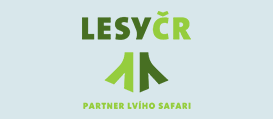It is a girl! ... And a boy! Two black rhino babies born in Dvur Kralove Zoo within 17 hours
Date: 02.02.2015
Unique achievement has been accomplished in Dvur Kralove Zoo, Czech Republic. On Sunday 25th January, the 40th black rhino baby was born in the zoo. But keepers had no time to take a rest – a black rhino baby no. 41 was born just 17 hours later.
„Although Dvur Kralove Zoo is among the most successful rhino breeders in the world, two babies within 17 hours we have not experienced yet and I guess we will hardly ever go through such a demanding situation again,“ said Jiri Hruby, a rhino curator of the zoo. „However, the most important thing is that all babies and mothers are OK.“
Keepers were worried especially regarding a female Jessi that has given birth to seven babies already. But her last calf in 2012 was stillborn and she had to cope with health problems. Fortunately, her eighth calf, a boy, was born on Monday 26th January with no problems at all. As Jessi reached age of 30 just in December, she became the oldest of the females that have ever given a birth in Dvur Kralove Zoo.
A day earlier, a female Maisha gave birth to a beautiful baby girl. It is her second calf.
Dvur Kralove Zoo has been involved in eastern black rhino breeding programme in Mkomazi National Park in Tanzania. One of Jessi’s previous babies, a male named Jamie, was together with two other rhinos from Dvur Kralove Zoo transported to Tanzania in 2009 and he has sired two baby girls in Africa since the translocation. The zoo plans to transfer one more rhino female to Tanzania this autumn to enhance the Mkomazi population. It is estimated just about 700 eastern black rhinos remain in the wild.
In total, 53 rhino babies have been born in Dvur Kralove Zoo so far. Apart from 41 eastern black rhinos, 3 great one horned rhinos, 3 southern white rhinos, 5 northern white rhinos and one crossbred between southern and northern white rhino; the zoo is the only animal park where northern white rhinos have reproduced and with its partners it currently leads efforts to save this most endangered mammal in the world.
Photo: Lukáš Pavlačík / ZOO Dvůr Králové







